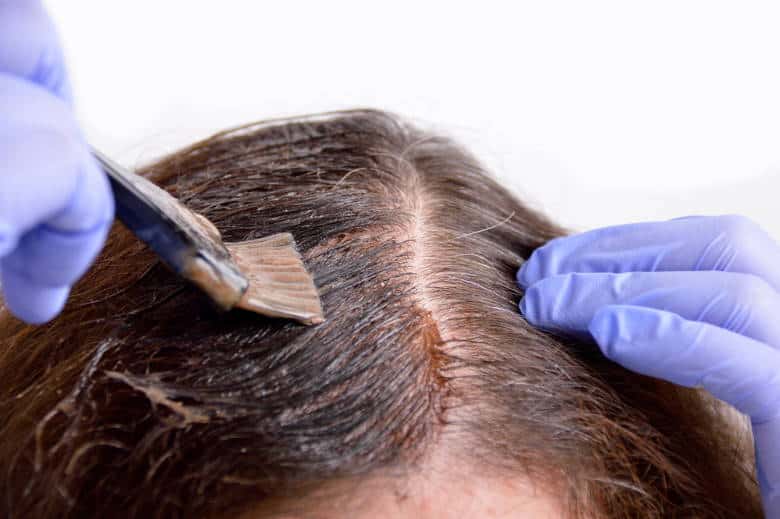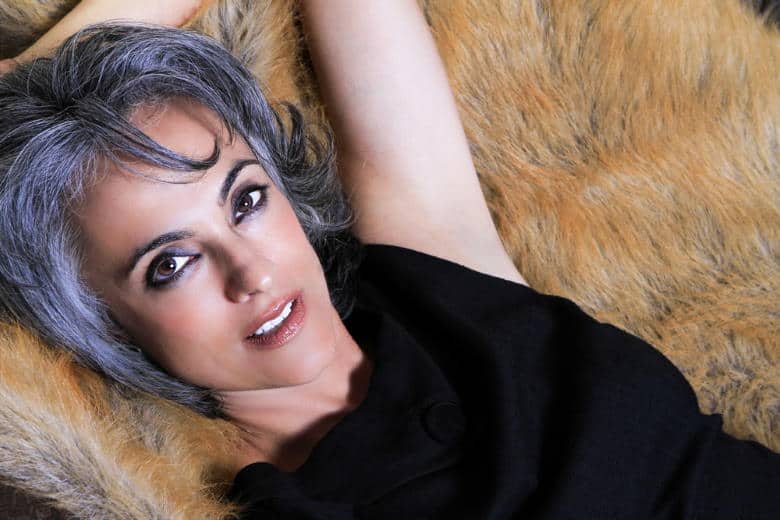It’s not a fun day when you find your first gray hair. It doesn’t even matter how old you are – it’s a marker that tends to surprise you whether you’re 20 or 40. At first you think, “it’s just one”, and let it go. But gradually, maybe even suddenly, you find a couple here, a few more there. And then you start to appreciate your natural color more because you know that someday, the majority of it will be gray.
Why does hair turn gray anyway?
Understanding Hair Color
Pigment called melanin gives you the color of your skin and hair. Whether you have blonde, brown, red, or black hair, your natural color is determined by the melanin your pigment-producing cells – called melanocytes – generate.
Gray hair is caused by a loss or decrease in melanin production in your hair follicle. Each strand of hair goes through a life cycle that lasts between 2-6 years from when it protrudes from your scalp to when it eventually falls out.
An individual strand of hair doesn’t actually turn gray as it grows. When it sheds, the new hair that grows in its place might be gray. If your melanocytes don’t produce as much pigment, hair appears gray instead of your original color.
This is due to the fact that cells that control hair growth are separate from the cells that control hair color. As you age, one or the other can wear out, leaving you with grays or thinning hair (or both). When pigment cells stop producing melanin altogether, hair appears completely white.
What Causes Hair To Turn Gray?

The main reason your hair turns gray is normal aging. There’s an oft-quoted 50/50/50 rule that says that overall, 50% of the population has 50% gray hair by the time they are 50 years old.
And here’s the thing: when you start to go gray is largely determined by your genes and ethnicity. Caucasians tend to go gray the earliest, usually around their mid-thirties, Asians in their late thirties, and African-Americans by their mid-forties.
However, if you’re going gray prematurely – like in your teens or twenties – it might be due to a condition or illness.
One common reason is vitamin B12 deficiency. Other culprits may be thyroid disease, a rare genetically-inherited tumor, a disorder where the pigment-producing cells in your scalp are destroyed (vitiligo) or alopecia areata, where patches of hair fall out, leaving any grays you have more visible than usual.
Lifestyle Factors
Since there isn’t much you can do about your genes and ethnicity, you might wonder if there’s anything you can do to stave off grays as long as possible.
There are a few things you can do to help prevent yourself from going gray sooner than you must:
- Don’t smoke or quit smoking. Smoking is linked to premature aging. By default, aging your cells more quickly will accelerate the rate at which you start to get gray hair (and wrinkles on your skin).
- Reduce stress. Stress is well-known for affecting your health in many ways, including increasing blood pressure, raising cortisol levels, and affecting your skin and hair. Up until recently, scientists weren’t able to explain why stress causes grays, but a new Harvard study indicates that it does so by killing off pigment-producing stem cells in your hair follicles.
- Eat a nutritious, healthy diet. What you eat affects your hair health, so make sure to get enough nutrients – particularly protein, biotin, vitamins, and minerals – for a healthy body and mane. The healthier your locks are, the less likely they’ll shed and regrow as gray.
What To Do About Grays
If you live long enough, it’s inevitable that you’ll get at least a few grays. Whether you color them or leave them be is an entirely personal choice, of course. You can mask them with dyes or concealers, or simply embrace the silver fox in you.
When you only have a few grays, there’s no need to change anything about your hair care routine. Most importantly, don’t pluck gray hairs out. (I need to heed this myself, it’s just too tempting!)
If you tweeze your grays, a new strand will grow back gray in its place, so you’re not getting rid of it for good. You might actually damage your hair follicle with continued tweezing to the point of it not regenerating another hair altogether.
Suffice it to say – it’s better to have gray hair that you can color if you wish, than no hair growth at all.
Highlighting, Lowlighting, and Coloring…Oh My!

If you opt to color, a good time to start is when you’re roughly 30% gray. One good option when you’re about a quarter gray is to color your locks with a technique called bayalage. It’s a good way of working with and camouflaging your grays to look more like sunkissed highlights.
Otherwise, for full-on dye jobs, you have the choice of permanent or semi-permanent and vegetable dyes for coloring your hair. You might even want to try a different color altogether – if you’re going to dye your locks, why not rock a shade you weren’t born with?
Permanent dyes are best at concealing grays, but you’ll see a distinct line on your strands when hair grows out. Semi-permanent dyes don’t cover grays as well, but they also don’t leave an obvious mark where new growth occurs.
For best results, consult your beautician or a colorist at your salon to come up with a good plan for coloring your tresses or transitioning to gray.
To save money, you can also purchase at-home coloring kits. It’ll take some practice and you might need someone to help you with the back of your head. Coloring at home helps you extend the time between salon visits even if you do have it done professionally.
Lastly, there are temporary solutions like root touch ups and concealers that are easier than a full dye kit and less messy to apply. They usually only last til your next shampoo and wash though.
Embracing The Gray and Caring For It

If you do decide to embrace your silvery locks, more power to you! Who knows, you might just find that you prefer your grays after all, especially if you pair it with a new style.
It’s important to note that gray hair isn’t just a different color. The texture changes too – it’s generally drier and finer than colored hair because the outer cuticle layer is thinner. It will probably also feel more coarse and brittle.
Gray strands tend to be more resistant to coloring too, so you’ll save yourself that frustration by going au naturel.
Since your scalp produces less sebum as you age, you’ll want to moisturize and condition your scalp and hair to keep them healthy and hydrated.
Use a blue or purple shampoo too – it’ll prevent grays from turning coppery or brassy in color. Clarifying shampoos are also helpful to reduce yellowing from sun and light exposure.
For even more moisture, try a hydrating shampoo or cleansing milk.
Finally, don’t use heavy creams or thick serums when styling, particularly if you have fine hair. They’ll just weigh your hair down and make it look flat instead of bouncy and voluminous. To control frizz and flyaways, a light anti-frizz spray should do the trick.
Take Heart
Though gray hair may remind you that you’re not getting any younger, it doesn’t mean you’re any less beautiful or desirable. Be thankful that you still have hair to style or color!
